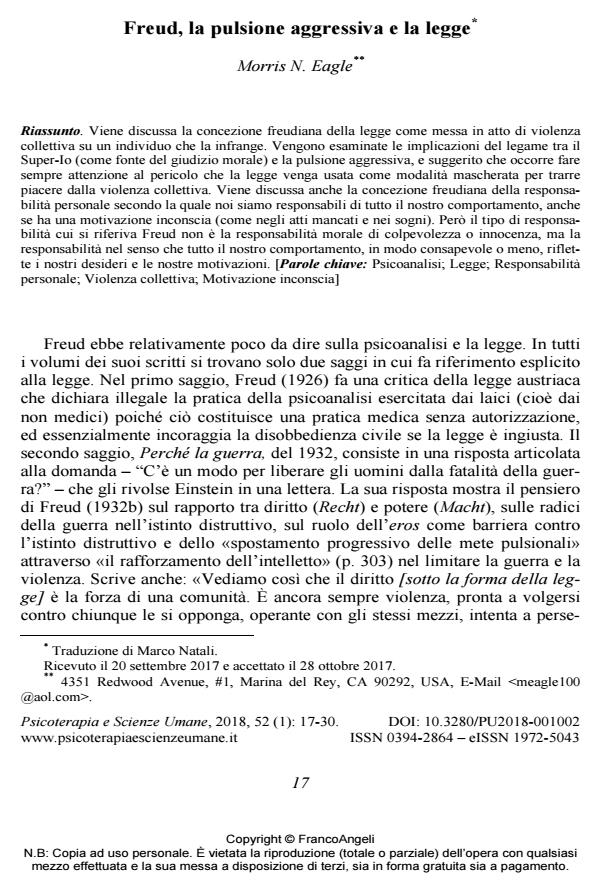Freud, aggressive drive and the law
Journal title PSICOTERAPIA E SCIENZE UMANE
Author/s Morris N. Eagle
Publishing Year 2018 Issue 2018/1
Language Italian Pages 14 P. 17-30 File size 91 KB
DOI 10.3280/PU2018-001002
DOI is like a bar code for intellectual property: to have more infomation
click here
Below, you can see the article first page
If you want to buy this article in PDF format, you can do it, following the instructions to buy download credits

FrancoAngeli is member of Publishers International Linking Association, Inc (PILA), a not-for-profit association which run the CrossRef service enabling links to and from online scholarly content.
The paper discusses Freud’s view of the law as the implementation of collective violence on the individual violator. The focus is on the implications of the link between the superego (as the source of moral judgment) and the aggressive drive, and it is suggested that we need to be ever vigilant regarding the danger of employing the law as a disguised means of taking pleasure in collective violence. The paper also discusses Freud’s conception of personal responsibility, according to which we are responsible for all our behavior, including unconsciously motivated behavior (such as slips and dreams). However, the kind of responsibility Freud has in mind is not the moral responsibility of blameworthiness or praiseworthiness, but rather responsibility in the sense that, whether or not acknowledged, all our behavior reflects our personal desires and motives.
Keywords: Psychoanalysis; Law; Personal responsibility; Collective violence; Unconscious motivation
- Dibattiti. A proposito dell'articolo di Morris N. Eagle (2018) "Freud, la pulsione aggressiva e la legge" Pietro Pellegrini, in PSICOTERAPIA E SCIENZE UMANE 2/2018 pp.299
DOI: 10.3280/PU2018-002007
Morris N. Eagle, Freud, la pulsione aggressiva e la legge in "PSICOTERAPIA E SCIENZE UMANE" 1/2018, pp 17-30, DOI: 10.3280/PU2018-001002